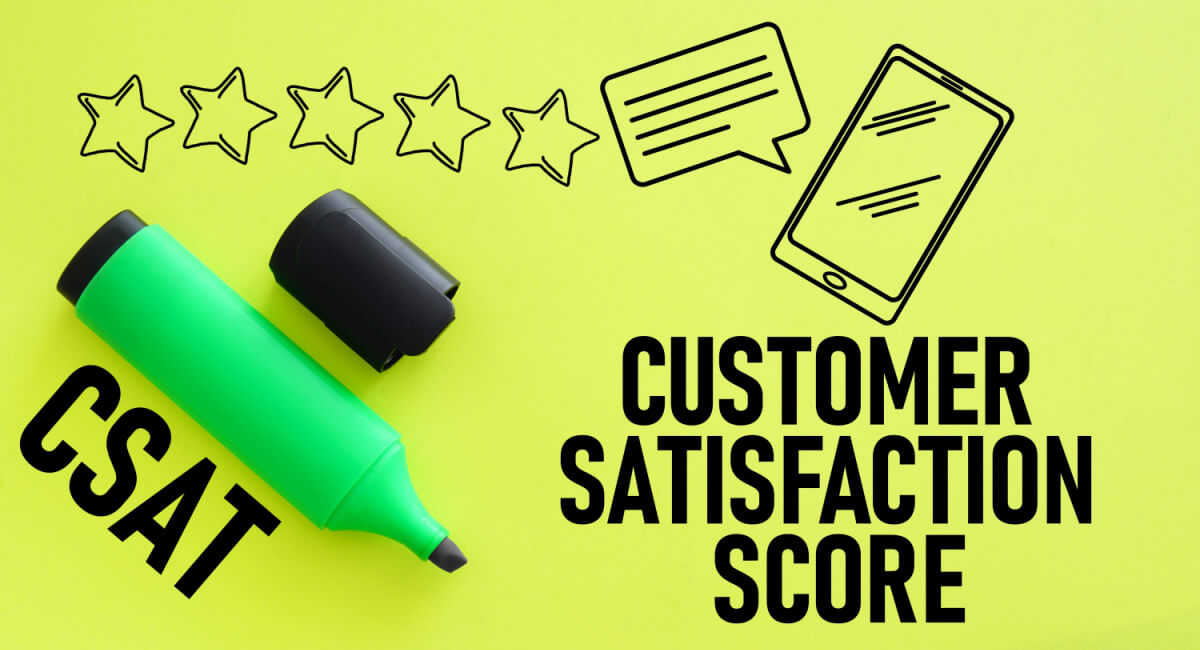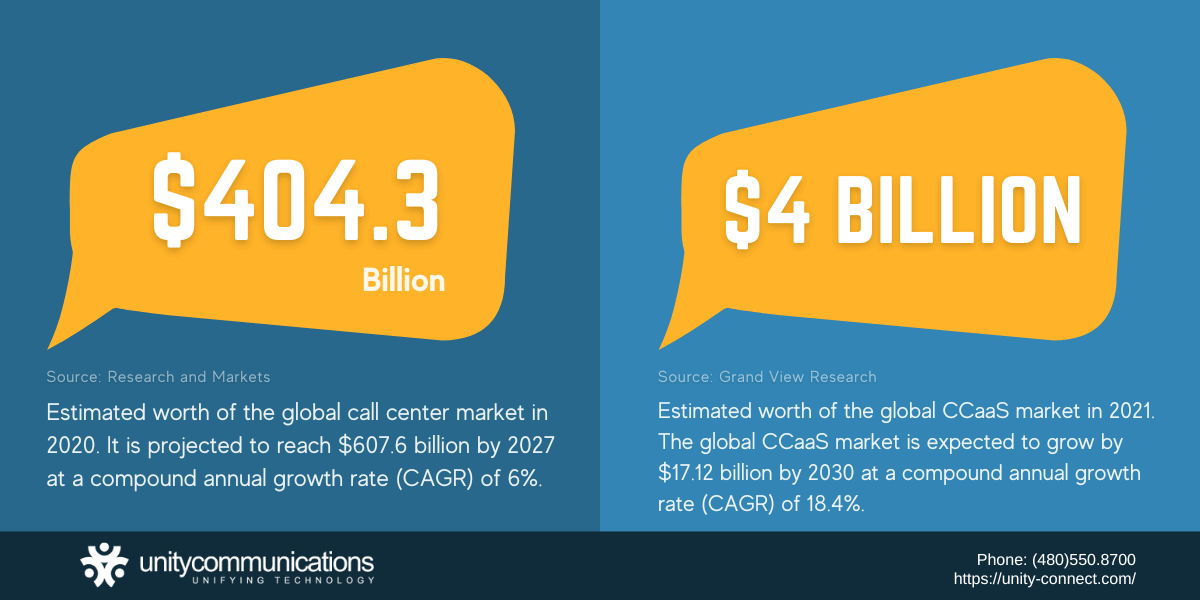Table of Contents
Contact centers serve the most important stakeholders—customers. Their goal is to enhance the customer experience to achieve high satisfaction.
Unfortunately, some companies have no contact centers, while others provide poor customer support. Both situations have negative repercussions on company profits and success.
Thus, establishing a customer hub or optimizing your current operation is crucial. Employing a skilled workforce and contact center as a service (CCaaS) technology helps you gain several advantages.
This page tackles the benefits of contact centers. Read on to learn how they can boost your customer satisfaction.
Understanding Contact Centers for Customer Support

A contact center is a hub for customer support. It handles front-office functions such as customer service and assists customers virtually and remotely. Today’s complex communications technologies make this possible and increase the benefits of contact centers.
Customer-facing Functions Contact Centers Handle
Contact centers handle customer-facing tasks. Their representatives provide direct services to customers. Below are some examples of the services contact centers offer.
- Customer service is the most common customer-facing function handled by contact centers. Customer service representatives assist customers via phone calls, email, or chat. They answer questions, give updates, process orders, handle complaints, and resolve issues.
- Technical support provides customers with technical assistance. These customers are end users of technology products such as computers and mobile phones. Technical support representatives perform troubleshooting, hardware repairs, software fixes, and network diagnoses.
- Sales or telemarketing involves contacting potential leads and selling products or services. Telemarketers place calls, while other sales representatives perform cold email outreach. Their end goal is to convert leads into successful sales.
- Digital marketing entails contacting customers and promoting brands via online platforms. Email, content, and social media marketing are examples of the strategies involved in this process. Marketers use contact centers to send promotional emails and engage online with consumers.
Communication Channels Contact Centers Use
In the past, companies reached customers via telephones and call centers. Today, contact centers use the following communication channels:
- Phone calls. According to the Contact Center Satisfaction Index (CCSI), 72% of customers still prefer phone calls to contact customer service. This shows that phone support is still important in customer service, while digital channels are growing.
- Email. The same CCSI report identifies email as the second-most preferred channel. About 20% of customers contact customer service through this method. Specialists use a system that acknowledges customer messages and routes them to available agents.
- Chat. Following phone calls and emails is chat. According to the same CCSI report, about 15% of customers prefer to communicate with representatives via live chat. These agent-customer interactions occur using a web chat platform.
- Short messaging service (SMS). Companies now communicate with customers via text messaging. Customer service representatives send text messages to answer customer inquiries. Meanwhile, sales representatives use the same method to promote products or services.
- Social media. The over four billion active social media users worldwide make using these platforms for customer service and support a no-brainer. Companies use Facebook for customer engagement, Messenger for order placement, Instagram for product promotion, and LinkedIn for client interaction.
- Self-service. Contact centers offer self-service options for customer empowerment. Some channels include interactive voice responses (IVRs), website chatbots, and frequently asked questions (FAQ) pages. Online forums and knowledge base centers also provide customers with essential information.
How Contact Centers Lead to Customer Satisfaction

Contact centers offer multiple communication channels, including self-service options. When brands become more accessible by adopting these channels, customers become more satisfied. But there is more here to consider. Before that, let’s first define and understand customer satisfaction.
What Is Customer Satisfaction (CSAT)?
CSAT measures how satisfied customers are with your company. Maintaining a high CSAT score is ideal because customers are happy doing business with you. Thus, this metric draws the line between business success and failure.
In contact center operations, CSAT is the most important metric. It is one of your key performance indicators (KPIs); it determines whether customers are happy or frustrated with your business offerings and support.
Typically, customers receive optional surveys after every contact. These surveys are vital because they help companies rate agent performance, get customer feedback, and improve their businesses.
How Contact Centers Achieve CSAT
Companies establish contact centers to cater to customers. They improve customer interactions by leveraging digital tools and employing a robust workforce of skilled and knowledgeable agents.
Ultimately, they hope to reap the primary benefit of contact centers—customer satisfaction.
How do contact centers achieve high customer satisfaction? Read on!
- Offer multiple channels. About 88% of respondents agreed that customers have higher expectations of customer service than in the past. They have become wiser and more critical now that they have more choices. Omnichannel support gives your customers various options and helps create an exceptional customer experience.
- Provide self-service options. An omnichannel solution includes an IVR, a chatbot, and a FAQ page. Offering such options lets customers find solutions to their problems independently. These empowered customers become loyal supporters.
- Allow recording and monitoring. Contact centers employ the latest technologies, such as call center as a service (CCaaS) and computer telephony integration (CTI). These tools enable seamless recording and real-time monitoring of agent-customer interactions. Regular audits for quality encourage agents to improve customer satisfaction.
- Perform business forecasting. Whether agents communicate through text or voice, big data, and predictive analytics enhance contact center operations. Their algorithms make business predictions based on data insights, such as patterns and trends. Better business forecasting means increased agent availability. Customers do not have to wait in a queue.
- Improve business reporting. Business reporting is crucial to overall success, especially for front-office teams because they work directly with customers. Prioritize efficient reporting to ensure you meet key metrics and satisfy your customers.
- Enhance customer experience. Contact centers evolved from call centers. They now provide multiple channels, including self-service portals. They offer streamlined interactions and personalized experiences, improving customer satisfaction.
Contact Center Objectives for Customer Satisfaction
The benefits of contact centers extend beyond your current operations. They allow businesses of all sizes to do better and offer more in the future.
Customer Contact Week Digital forecasted the future of contact centers. Companies operating in this segment identified the following as the most important objectives:
- Increasing the use of digital channels (85.15%)
- Increasing the use of automation (85%)
- Customer satisfaction (81%)
- Collecting and/or actioning customer feedback and insights (78.22%)
- Customer loyalty and advocacy (72.73%)
- Customer effort (71%)
- Collecting and/or actioning employee feedback and insights (69.70%)
- Adopting design thinking (67.35%)
- Reducing inbound volume (67.33%)
- Cost reduction and efficiency (66.67%)
- Indirect revenue (61.39%)
- Agent effort (54%)
- Agent satisfaction and retention (54%)
- Direct sales (46.53%)
The Customer Contact Week Digital report also listed the following as key elements of future contact centers:
- Omnichannel solution – offering multiple channels such as phone calls, email, chat, etc.
- Remote work support – providing support to remote employees in the post-pandemic era
- Robust customer data – focusing on big data for business reporting and ensuring data privacy and protection.
- Front-office artificial intelligence (AI) – using AI to optimize customer-facing functions.
- Back-office AI – using AI to improve business-facing operations
Consider adopting all these elements if you want to future-proof and scale your contact center operations.
10 Benefits of Contact Centers for Customer Satisfaction

The contact center industry is growing, as these statistics reveal:
- Research and Markets: The global call center market was worth $314.5billion in 20202. It is projected to reach $494.7 billion by 2030 at a compound annual growth rate (CAGR) of 5.8%.
- Grand View Research: The global CCaaS market was worth almost $4.43 billion in 202. It might hit 17.12 billion by 2030, with an 18.4% CAGR.
Combining the two figures gives you a better idea of the contact center’s market growth. More and more companies are investing in customer contact. To find out why let’s look at the benefits of contact centers.
1. Accessible Omnichannel Solutions
Omnichannel solutions have become the norm in business. According to Hiver’s report, 60% of customer service teams use more than three communication channels, with phone calls (83%), email (77%), and live chat (42%) as the most popular options. Other channels include SMS, social media, and self-service portals.
To please your target customers, offer them a multichannel contact center. Why? More customers demand access to different communication channels. You build a loyal customer base by meeting their expectations and emphasizing accessibility.
2. Empowered Customers via Self-service Options
Contact centers now offer self-service options such as IVR, chatbots, FAQ pages, and online forums. Almost 40% of customers prefer to use self-service options rather than communicate with agents. About two-fifths say they resolve issues faster via self-service options than other channels.
Empowering customers is one benefit of contact centers. Self-service allows customers to resolve issues themselves by finding solutions to their problems. About 36% of customers would be happy if they did not need to speak with representatives again.
3. Empowered Agents for Improved Performance
A third of business leaders invest in digital tools to empower their front-office teams. The more empowered these representatives are, the better their customer service. Thus, digitalization is the top priority of many business executives.
Omnichannel solutions empower customers and agents alike. Automation removes manual work and makes representatives more efficient. BDA also provides efficient forecasting and reporting. Ultimately, agent empowerment also leads to customer satisfaction.
4. Improved Customer Journey
The customer journey refers to customers’ steps when dealing with a brand. It involves their whole experience, from finding products to making purchases.
About 70% of online shoppers abandoned their carts. The same problem applies to contact centers as far as the customer journey is concerned.
You might drive your customers away if you offer only one communication channel. However, providing them with multichannel support improves their buying experience. They can place orders online, follow them up through a call center, and receive updates via email.
5. Efficient Customer Support
Swift customer support is vital in business. According to HubSpot, 90% of customers consider an immediate response important for customer inquiries. Over 80% say the same thing for marketing and sales questions. Faster service speed is crucial to keep customers happy.
A contact center offers multiple channels. If customers want quick answers, they have to call customer service. If they seek to place an order immediately, they can do so via your online website. If they are looking for updates, they can wait for email responses. Thus, quick customer support is one benefit of a contact center.
6. Quality Customer Service
Customers expect quality service, which leads to greater satisfaction. But what does it mean to offer quality services? You can tell a contact center has superb service when agents:
- Answer customer inquiries accurately
- Process customer orders efficiently
- Provide request updates promptly
- Resolve customer issues effectively
Most contact center operations focus on quality service. They use technology with advanced features such as data recording and live monitoring. They also employ quality analysts to audit customer interactions and monitor representatives. Their end goal is to gauge agent performance and improve contact center operations.
7. Ensured Privacy and Enhanced Security
Contact centers use technology to ensure data privacy and network security. For example, cloud-based software such as CCaaS and computer telephony integration (CTI) enables data protection and allows companies to secure their systems and networks to avoid data breaches.
Customer relationship management (CRM) and workforce management systems (WMS) also have robust security features to protect customer data from cyberattacks.
Another great benefit of a contact center is that it sets stringent privacy and security measures. It orients and trains contractors on cybersecurity measures and holds them accountable. Expect contact centers to have enhanced privacy and security policies to satisfy customers.
8. Personalized Customer Experience
In today’s business landscape, personalization is integral to success. According to Segment, personalization and return on investment (ROI) are closely related. Nearly 50% of customers will regularly buy from businesses because of a personalized shopping experience.
But the bar for personalization is getting higher. Only 47% of businesses have personalized interactions.
Meanwhile, 35% of companies claim they have successfully achieved omnichannel personalization. Multichannel contact centers build customer relationships and create better, more personalized experiences.
9. Enhanced Customer Interactions
According to the CCSI report, creating an exceptional customer experience is a top priority. Almost 50% of teams have identified this as the most important objective. An excellent customer experience has no friction throughout the customer journey.
Enhancing customer interactions is one key benefit of contact centers. As explained above, a contact center offers multiple channels and self-service options. It also improves the entire customer journey, helping you meet your customer satisfaction goals.
10. Met Customer Expectations for Profitability
Almost 75% of businesses report a direct link between customer service and business performance. Quality customer service leads to an increase in sales revenue. Take note of the following when setting up or improving your contact center operations:
- 93% of customers will spend more on businesses offering their preferred communication channels.
- 92% will spend more on businesses that do not require repetitive information.
- 90% will spend more on brands with a personalized customer experience.
- 89% will spend more on businesses providing self-service options online.
Today’s customers expect and demand more from companies and contact center operations. If you meet their expectations, they will be delighted. In the end, satisfied customers equate to a profitable business.
How To Optimize Your Contact Center Operations

The benefits of contact centers are undeniable. The resulting improved customer interactions lead to customer satisfaction. Thus, optimizing your contact center operation is the best way to achieve high satisfaction.
Consider the following recommendations:
- Employ an omnichannel solution. If you have a call center, transition to a contact center. Offer phone, email, and chat support. If possible, consider using social media and SMS.
- Offer self-service options. If you run a contact center, consider the benefits of self-service portals. Consider using an IVR, chatbot, and mobile app. Also, create a knowledge base center and online community forum.
- Use advanced technology. The latest technological resources give your business a competitive edge over others. Invest in CCaaS, CTI, CRM, and WMS for your contact center operations.
- Ensure technological integration. Integrate all your digital tools in one place. Manage customer interactions using one unified platform to ensure data privacy and security.
- Employ a skilled workforce. Your contact center agents are your most valuable assets. Make sure to hire good talent and train them to be even better. They will help you win and keep customers for your business.
- Improve your workflow. Technologies such as AI and automation help optimize your operations. But make sure agents adhere to your optimized workflow. The goal is to provide a smooth customer journey and seamless experience.
- Promote a customer-centric culture. If you’re looking to optimize your contact center, prioritize your customers. They are the most important stakeholders in your business. Focus more on consumer needs than your profits, and you’ll reap the benefits of your contact center.
How To Find a Contact Center Support Provider

Hire the right provider when establishing a contact center or optimizing your operations. A contracted vendor gives you access to the latest technology and advanced resources. It also employs the best agents for your customer contact operation.
Take advantage of the benefits of a contact center. The right provider is instrumental to your overall success. Explore how you can find the best contact center provider below.
- Study your market. Start by researching and doing your due diligence. First, learn about the current and emerging trends in your industry. Second, identify your target market and understand consumer needs. Both insights help you set clear business objectives for your contact center.
- Assess your contact center operations. After studying your market, examine the way you interact with customers. Your business may have suboptimal customer support. Make sure to identify all challenges and list your contact center needs.
- Identify functions for your contact center. Decide which business functions to tackle. As mentioned, a contact center handles customer-facing tasks. Thus, your choices are customer service, sales, and tech support. If possible, create departments for your contact center to include all functions.
- Decide on the type of contact center you need. There are three types of contact centers. First, an on-premises center requires purchasing the technology and tapping into a network provider. Second, a cloud-based contact center entails working with a provider that uses and hosts CCaaS. Lastly, a hosted center involves hiring a managed service provider (MSP) to handle your entire operation.
- Look for a service provider. When looking for the right service provider, search online or get recommendations from various stakeholders. Check the services offered on their websites to see which providers cater to your needs. Create a list of prospects.
- Hire the right service provider. To filter your options, consider some crucial factors, including the prospects’ credentials, technology, resources, workforce, and pricing structure. Study proposals and schedule appointments with a few worthy providers to help you decide whom to hire.
- Start your new operation. Kick off your new operation after hiring a service provider. Create a service-level agreement (SLA) and set key performance indicators (KPIs) to keep track of service quality. Also, ensure constant communication and collaboration. With all these steps, you will enjoy the benefits of a contact center.
Are you looking for a third-party contact center? You’ve come to the right place!
Unity Communications has 12 years of business process outsourcing experience and has received awards and accolades. It handles contact centers for ecommerce customer service, healthcare verification, and technical support. The company can meet your operational needs with its expert workforce and advanced technology.
We are committed to scaling our clients’ contact center operations. Get in touch with us today to see how we can help.
The Bottom Line
Your business’s success hinges on its ability to serve customers effectively. Recognizing that customers are the most crucial stakeholders, focusing on meeting their needs and enhancing their experiences for ultimate satisfaction is essential.
A robust customer contact hub brings numerous advantages, such as seamless omnichannel solutions, improved customer journeys, and superior customer experiences. Consider establishing or scaling your contact center operations to leverage these benefits and foster customer satisfaction.
For expert assistance in achieving these goals, contact Unity Communications to guide you in enhancing your customer contact strategy.




